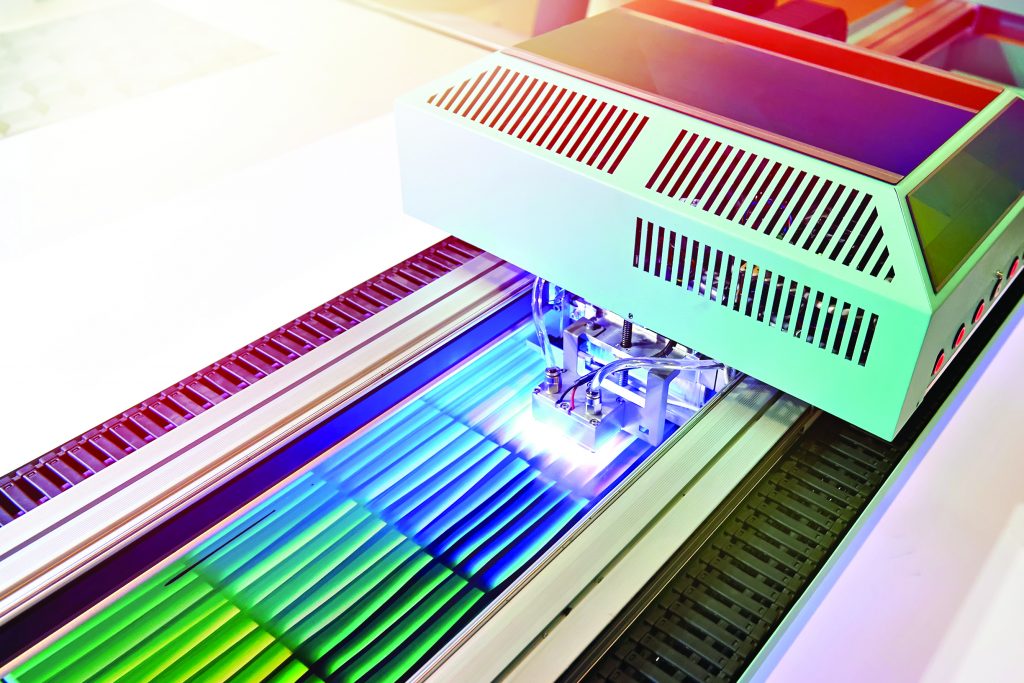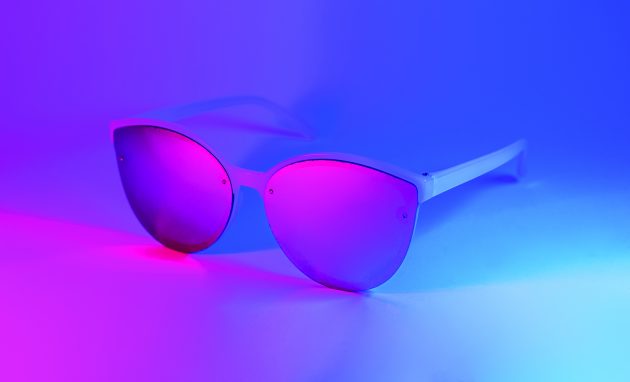
Features
Opinion
Tech
Making the invisible visible
Ideas for sustainable process optimization and waste reduction in packaging
March 10, 2022 By Jan Sierpe
 Optical brightener agents help reduce material waste and rework in packaging manufacturing. Photo © Sergey Ryzhov / Adobe Stock
Optical brightener agents help reduce material waste and rework in packaging manufacturing. Photo © Sergey Ryzhov / Adobe Stock Sustainable process optimization and waste reduction in packaging manufacturing is about adopting a low-cost strategy.
The gloss and colour appearance of paperboard or synthetic substrates is a vital visual attribute in marketing packaged products. The introduction of optical brightener agents (OBAs) on inline dispersion UV or AQ coatings in the printing process enhances the finished products.
Recently, I inspected various products at a supermarket in Dubai. To my surprise, many products had overprint coatings with OBAs. Cereal boxes substrate appeared whiter and cleaner. On close inspection with a UV light, the inks revealed traces of fluorescence. Also, it appeared they have more flexible packaging for snacks such as cookies, power bars and ice cream than in Canada and the US.
Cost could make flexible packaging an ideal choice, even for high-end premium ice creams such as Quanta triple chocolate from IFFCO, my favourite.
The OBAs have a definite shelf life, but they last long enough to support the customer’s demand. Exposure to sunlight tends to fade OBAs.
For process control with OBAs in dispersion coatings, operators can visually check its application and be alerted to defects and reduce waste due to the coating’s applications.
Process excellence supported by the right tools becomes seamless. Effortless process controls introduce smooth operations. Workers support these kinds of process control without supervision as they understand the purpose and appreciate effective and practical applications.
The strategy of introducing OBAs in the offset or flexo printing process is low cost. It helps reduce material waste and rework, particularly in packaging manufacturing.
Brightness vs. whiteness
Optical brighteners (OB), OBAs, fluorescent brightening agents (FBAs) or fluorescent whitening agents (FWAs) are chemical compounds. They target the same objective and are used in many industries to enhance blue light and minimize the amount of yellow light, creating brightening visual effects to make things appear whiter.
These chemical compounds absorb light in the ultraviolet and violet, ranging from 340 to 370 nm of the electromagnetic spectrum and re-emit glowing fluorescence light in the blue region between 420 and 470 nm.
The colour appearance of paperboard is vital for the esthetic value of packaged products. There is a level of expectation and instant association of the products’ quality with their visual packaging appearance. Its visual impact precedes the tactile experience. Substrates used in packaging have three optical properties relevant to finished products: colour, brightness and whiteness.
Brightness and whiteness are not the same. They have different properties with measurable parameters. The brightness appearance is the ability of a substrate to reflect blue light. Whiteness measures paper or substrate in the same way the eye sees it.
Using OBAs in coatings, the average observer’s lab values will remain unchanged even though they might display modest and measurable changes within the colour space—the higher the whiteness, the substrate appears whiter.
The brightness-meter tester determines the brightness level by measuring the intensity of the light reflection diffused on a scale of 100.
The whitest white
Titanium dioxide was an essential ingredient for papermaking, plastic and polymers for its very high reflective index for over one hundred years.Its use didn’t decrease because the Agency for Research on Cancer flagged and classified titanium dioxide as possibly carcinogenic to humans. The decline was due to economic and environmental reasons.
These additives’ effectiveness in enhancing the visual appearance of colour fabrics, plastics and printing substrates is well known. They produce a pleasing and whitening effect in many recycled substrates and paperboard stocks in order to compensate for the printing papers and board surface’s yellowish or grayish visual appearance.
Coating applications and visual inspections with OB
This procedure assists inline visual inspection of dispersion coatings applications on the fly. It is effective as it helps to check, identify and eliminate waste at the source.
This method is applicable on any substrate, and is used mainly in the packaging and label industry.
This method is accomplished by including OBAs in UV and aqueous dispersion coatings. The changes required to coating formulas should not increase the overhead costs.
Coating manufacturers would establish the ideal amount of OBAs to make possible the visual inspections, which typically range from one to five per cent of the OBAs’ components.
The coating applications are a simple, yet essential aspect of the finished product. The additional ingredient will not alter the coating’s gloss properties or the final visual appearance of the printed products. It will help assess the coating application’s evenness, minimize, or eliminate flaws and defects and enhance the substrate’s brightness.
Quality advantages of coating with OBAs
1. Faster visual quality checks of coated areas during make-readies.
2. Helps to inspect coating layout, glue flaps and knockout during production.
3. Allows checking for smoothness and surface penetration of coating applications in paperboard.
4. Assists in checking for unwanted coating spillover or coating misting that could block paperboard piles.
5. Allows checking for evenness and low spots or unevenness during production runs.
6. Increase the finished product’s brightness as OBAs enhance the product surface.
7. Allows accurate register for spot gloss or matte coating applications.
Required tools
To inspect coated areas of the printed sheet, the press operator, supervisor or QC staff only need a UV-A type of flashlight. Additional magnifying instruments aren’t required.
Jan Sierpe is an experienced and informed technologist focused on process optimization and waste reduction. He can be reached at sierpe.jan@gmail.com. For more info, visit his website, www.sierpe.ca.
This article originally appeared in the January/February 2022 issue of PrintAction.
Print this page
